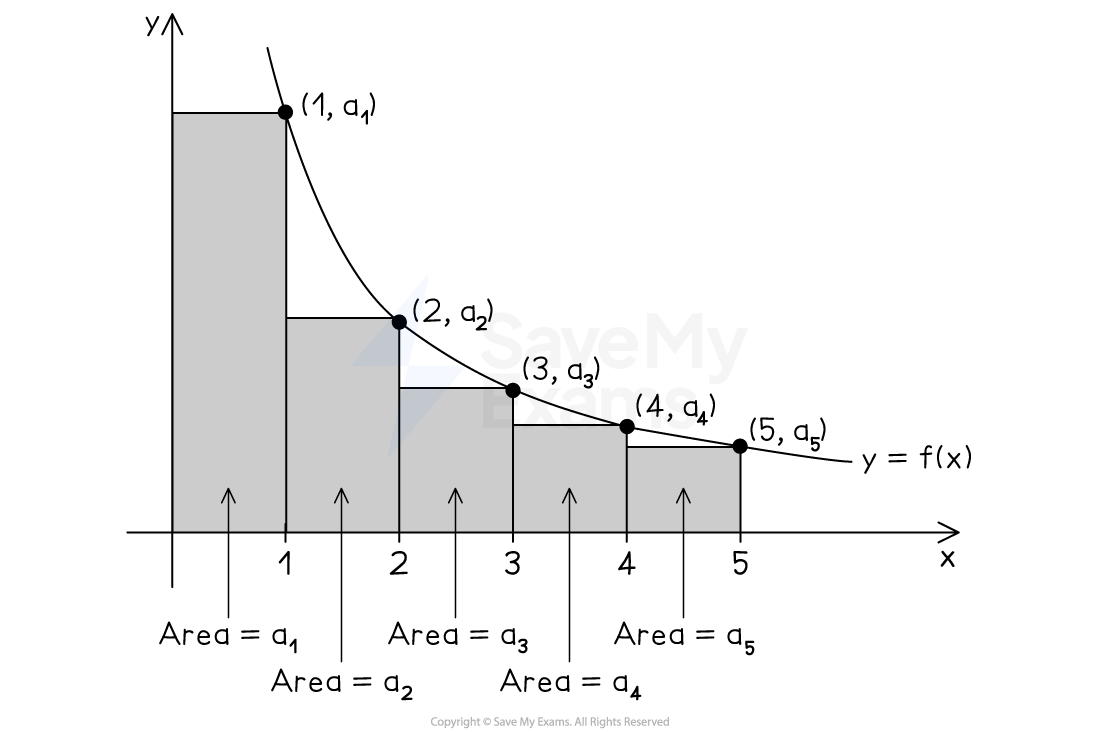Integral Test for Convergence (College Board AP® Calculus BC): Study Guide
Integral test
What is the integral test?
The integral test is a method of determining whether an infinite series converges or diverges
Let
, where
is a continuous, positive, decreasing function on
Then the series
converges if the improper integral
exists
I.e. if the integral has a finite answer
If the improper integral doesn't exist then the series diverges
How does the integral test work?
Each term in the infinite series
can be represented by the area of a rectangle of width 1 and height
The integral
represents the area
under the curve
from
to
In the first image,
is an underestimate of the rectangles
so

In the next image,
is an overestimate of the rectangles
Adding
to both sides gives

So
which means
if
is finite then
must have a finite value (the series converges)
if
is infinite then
must also be infinite (the series diverges)
Worked Example
Use the integral test to determine whether each of the following series converges or diverges.
(a)
Answer:
Note that this series is the harmonic series
Evaluate the improper integral
The improper integral diverges to infinity (as logarithmic growth tends to infinity, as
), so the series diverges
The integral diverges to infinity, so by the integral test the series is divergent
(b)
Answer:
Note that this is a p-series with
Evaluate the improper integral
The improper integral converges to a finite value, so the series converges
The integral exists with a finite value, so by the integral test the series is convergent

Unlock more, it's free!
Did this page help you?